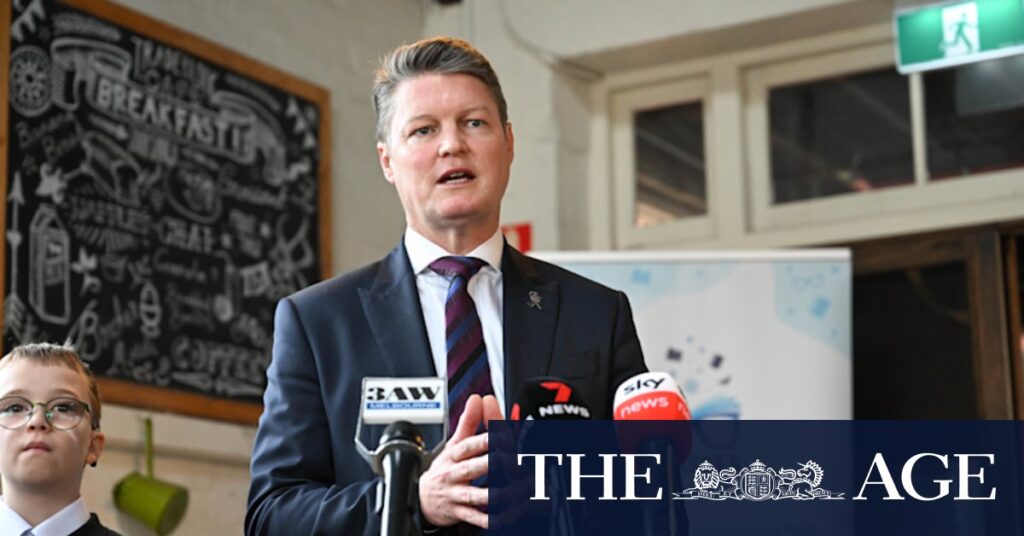
Education Minister Ben Carroll has pledged a “proper pay rise” for teachers in Victoria, following revelations that the state is the only one failing to meet its minimum funding commitments to government schools. This announcement was made during a speech at a business forum last week, which has since garnered cautious approval from the Australian Education Union (AEU).
The union, however, remains skeptical as recent budgets for 2026 provided to school principals did not include provisions for staff or salary increases. This comes amid ongoing negotiations between the state and federal governments to finalize a long-term funding agreement, aimed at fulfilling Prime Minister Anthony Albanese’s promise to implement the Gonski reforms fully. While other states have secured agreements with Canberra, Victoria has yet to do so despite signing a preliminary agreement in January.
Current State of Teacher Salaries
In his address, Carroll praised Victorian teachers for their role in achieving leading NAPLAN results this year. He emphasized that with the current enterprise bargaining agreement set to expire soon, recognizing teachers through substantial pay increases is imperative. “Our teachers deserve nationally competitive wages – a proper pay rise,” Carroll stated, though he did not specify the exact figures.
AEU Victorian branch president Justin Mullaly noted that while Carroll’s comments are consistent with past statements, there is no indication in the upcoming school budgets that additional resources are forthcoming. The union has been vocal about its dissatisfaction, particularly after reports surfaced earlier this year that the Victorian government had secretly diverted $2.4 billion from state schools and delayed its timeline to fully fund the Gonski reforms from 2028 to 2031.
Funding Discrepancies and Union Demands
The union is advocating for a 35 percent pay increase over three years to align Victorian teachers’ salaries with those in New South Wales (NSW). Currently, a graduate teacher in Victoria earns $78,801, compared to $90,177 in NSW, with a $15,000 gap for experienced teachers. The National School Resourcing Board recently highlighted Victoria as the only state not meeting its minimum funding requirements, providing $9.01 billion instead of the required $9.23 billion in 2023.
“The profession feels abandoned and neglected,” Mullaly stated, emphasizing the need for government advocacy for significant pay rises.
In contrast, NSW exceeded its funding commitment by $1.3 billion, funding 80.23 percent of the School Resource Standard, compared to Victoria’s 68.76 percent. Under an agreement signed in January, Victoria committed to increasing its funding to 75 percent, with the Commonwealth covering the remaining 25 percent once Victoria fulfills its share.
Political and Financial Implications
Carroll explained that unforeseen student needs and increased indexation of the School Resource Standard contributed to the funding shortfall. The board acknowledged these mitigating factors as reasonable. Meanwhile, NSW has accelerated its commitment to the Gonski reforms, offering an 8 percent pay rise in September 2023 and planning further increases over the next three years.
Opposition education spokesman Evan Mulholland criticized the Victorian government for prioritizing infrastructure projects over education. “The decision to not meet minimum funding requirements is deliberate and calculated because the government has no money to provide appropriate wages,” Mulholland said, accusing the government of neglecting public school students.
“You can’t pay our teachers and educate our kids in a rail tunnel,” Mulholland remarked, highlighting the tension between infrastructure spending and educational funding.
As negotiations continue, the AEU is preparing to escalate its campaign if a new wage deal is not reached before the next election year. Demonstrations outside government MPs’ offices have already been organized, with the union demanding concrete action to address the funding and salary disparities affecting Victorian teachers.
The unfolding situation in Victoria underscores the broader challenges of balancing educational funding with other state priorities, a dilemma that continues to spark debate among policymakers, educators, and the public.






